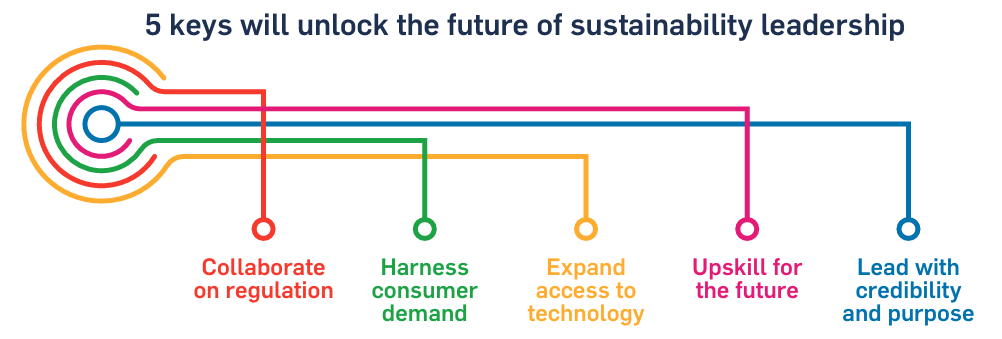The Business Case Has Never Been Stronger
The study highlights a striking figure, 88 percent of CEOs say the business case for sustainability is stronger today than it was five years ago. Why? Because integrating ESG principles reduces risk, boosts efficiency, attracts talent, and opens access to new markets and investors.
Yet, while conviction is strong, communication lags behind. Only half of CEOs feel confident publicly discussing sustainability progress. This transparency gap is a missed opportunity: as customers, employees, and regulators demand authenticity, credible sustainability storytelling can be as powerful as the metrics themselves.
Technology as a Catalyst for ESG Transformation
A core theme of the 2025 study is the role of digital transformation in accelerating sustainability. Ninety-six percent of CEOs see technology and innovation as critical to delivering measurable environmental and social impact. Artificial intelligence, blockchain-based supply-chain tracing, and advanced analytics are enabling companies to track emissions, monitor supplier practices, and validate progress in real time.
However, only a quarter of CEOs list technology among their top strategic priorities. The implication? The tools exist, but digital adoption must scale faster to meet 2030 targets. Companies that unite sustainability data and digital infrastructure will lead the next wave of ESG maturity.
Collaborate or Fall Behind
Sustainability challenges don’t stop at corporate borders. Ninety-seven percent of executives expect to achieve more impact through industry collaboration and value-chain partnerships than through isolated action. That means deeper cooperation on fair-trade sourcing, low-carbon logistics, and transparent data sharing.
For businesses like Celtic Dynamics, this insight reinforces the value of building resilient ecosystems, partnering across suppliers, clients, and regulators to drive measurable, system-wide change.
The Five Keys to Sustainable Leadership
The UN Global Compact study outlines five strategic priorities that define the next generation of sustainability leadership:
- Collaborate on regulation: Shift from compliance to co-creation of standards that reward innovation.
- Harness consumer demand: Design sustainable products that balance affordability and impact.
- Expand access to technology: Democratize digital tools that help small enterprises decarbonize and grow.
- Upskill for the future workforce: Prepare employees for AI-assisted and green-economy roles.
- Lead with credibility and purpose: Tie incentives to outcomes, back up commitments with transparent reporting, and communicate authentically.
Together, these actions move organizations from ambition to accountability, a central theme of ESG transformation in 2025.

Two Futures: Coordinated vs. Fragmented
The study describes two possible trajectories for global sustainability. The first coordinated acceleration imagines harmonized standards, equitable access to technology, and rapid decarbonization. The second fragmented adoption sees uneven progress, regional disparity, and regulatory patchwork.
The direction business leaders choose will determine whether sustainability remains a competitive advantage or becomes a survival necessity. The next 24 months are pivotal.
What This Means for Businesses Today
For companies building a sustainable business strategy in 2025, three actions stand out:
- Link leadership incentives to measurable ESG outcomes such as emissions reduction, supplier diversity, or employee well-being.
- Invest in digital sustainability platforms that track carbon, circularity, and compliance data across the value chain.
- Empower your workforce with reskilling programs that merge AI proficiency with climate literacy.
Sustainability is no longer a side initiative; it’s the blueprint for resilient growth. As the global CEO community makes clear, the winners of the next decade will be those who turn responsibility into results.



